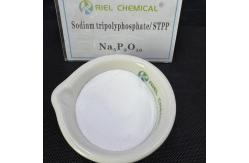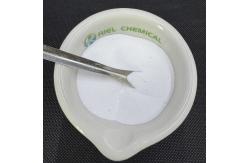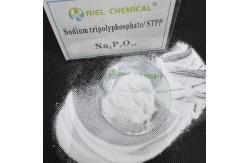Industrial Grade CAS 7758-29-4 For Sodium Tripolyphosphate Plant White particles
|
|
Industrial Grade CAS 7758-29-4 For Sodium Tripolyphosphate Plant
Key attributes
Physical and chemical properties of Sodium Tripolyphosphate
Sodium Tripolyphosphate (STPP) as an important chemical product, its international development prospects are affected by many factors, including market demand, environmental regulations, technological progress and so on. The following is an analysis of its international development prospects: 1. Market demand in detergents has decreased in developed countries due to environmental regulations, market demand remains strong in developing countries due to its cost-effectiveness and efficiency. Food Industry: With the growth of the global food processing industry, the demand for sodium tripolyphosphate as a water retaining agent and quality improver is expected to remain stable. Water treatment: With the attention of global water resources management, sodium tripolyphosphate has a broad application prospect in water treatment, especially in the field of industrial water treatment. 2. Environmental regulations strict environmental regulations limit the use of sodium tripolyphosphate in detergents, and promote the development and promotion of environmentally friendly alternatives (such as zeolite, sodium citrate). Developing countries: In developing countries with relatively loose environmental regulations, the use of sodium tripolyphosphate is still relatively common, but with the increase of environmental awareness, it may be gradually restricted in the future. 3. Technological progress the production process of sodium tripolyphosphate may be more environmentally friendly and reduce the impact on the environment. Development of new alternatives: With the progress of science and technology, more efficient and environmentally friendly alternatives will be developed to gradually replace the application of sodium tripolyphosphate in some fields. 4. Regional market analysis the market demand for sodium tripolyphosphate is gradually decreasing in these regions, and the market share of alternatives is increasing. Asia Pacific: Especially China and India, due to the rapid development of industrial and food processing industries, sodium tripolyphosphate market demand is still large. Latin America and the Middle East: Market demand in these regions is also growing, especially in the water treatment and food processing sectors. 5. Future trends the use of sodium tripolyphosphate may be further restricted in the future, and more environmentally friendly alternatives will be developed and promoted. Sustainable development: The chemical industry will pay more attention to sustainable development, and the production and use of sodium tripolyphosphate will pay more attention to environmental protection and resource conservation. 6. Challenges and opportunities and increasing production costs are the main challenges facing sodium tripolyphosphate. Opportunities: In emerging markets, especially in Asia Pacific and Africa, sodium tripolyphosphate still has a large market potential. In addition, technological advances and process improvements also provide new opportunities for the application of sodium tripolyphosphate.
1. Detergent industry and industrial detergents due to its excellent decontamination and water softening ability. Function: It can effectively chelate calcium and magnesium ions in water, prevent scale formation, and enhance the cleaning effect of detergent. 2. Food industry sodium tripolyphosphate is used as a water retaining agent to help retain the moisture of products and improve taste and texture. Quality improver: It can also improve the water retention and stability of food, extend the shelf life. 3. Water treatment as a corrosion inhibitor to prevent corrosion of pipes and equipment. Scale inhibitor: it can effectively prevent the formation of scale and maintain the efficient operation of the equipment. 4. Ceramic industry to help improve the grinding efficiency of raw materials. Dispersant: It can also improve the fluidity of the slurry and improve product quality. 5. Textile industry to help remove impurities from the fibers. Bleaching stabilizer: It can also stabilize the bleaching process and improve the bleaching effect. 6. Paper industry to help evenly disperse the fibers in the pulp. Retention agent: It can also improve the retention rate of the filler and improve the quality of the paper. 7. Other applications such as dishwashing detergent, hard surface cleaning agent and so on. Industrial cleaning: In industrial cleaning, it is used to remove grease and dirt from metal surfaces. 8. Environmental protection and substitution the application of sodium tripolyphosphate in some fields is gradually replaced by environmentally friendly alternatives, such as zeolite, sodium citrate and so on. |
||||||||||||||||||||||||||||||||||||||
| Product Tags: Industrial Grade CAS 7758-29-4 CAS 7758-29-4 White Sodium Tripolyphosphate Plant |

|
25KG Industrial Grade Na5P3O10 Sodium Tripolyphosphate For Power House |
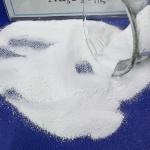
|
96% CAS 7758-29-4 Sodium Tri Poly Phosphate For Industrial Manufacturing |
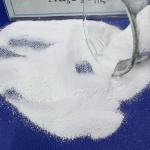
|
25kg Per Bag CAS 7758-29-4 Sodium Tripolyphosphate STPP For Water Treatment |
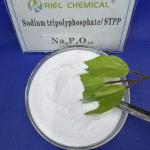
|
STPP High Purity Sodium Tripolyphosphate Industrial Grade Water Softener |
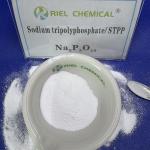
|
96% CAS 7758-29-4 Zero Scale State Lndustrial Grade STPP Water Treatment Agent |
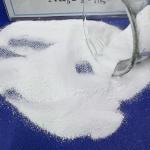
|
96% CAS 7758-29-4 Sodium Tripolyphosphate Born For Industrial Efficiency |

